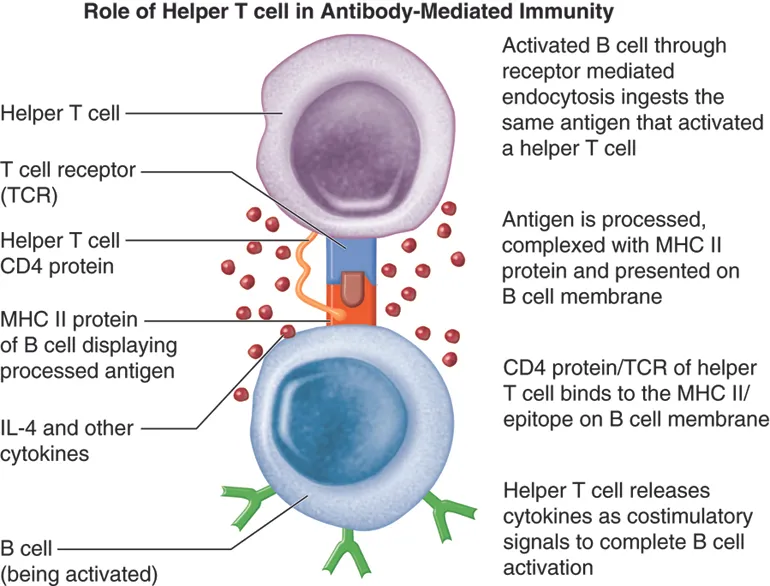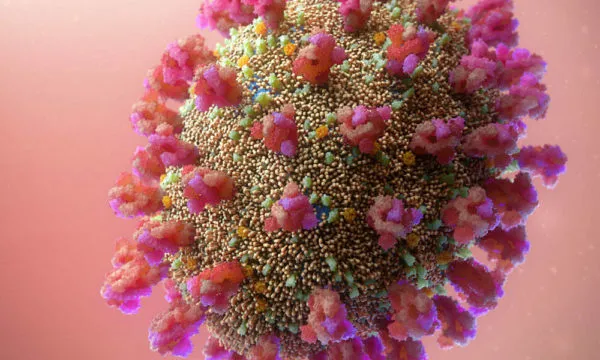Our bodies are comprised of trillions of cells, forming a vast interconnected ecosystem. Hence, the human body is not simply a singular entity but rather a complex amalgamation of various organisms coexisting within it. However, while the human body allows for the presence of certain microbes, the immune system views the entry of many microbes as an invasion and responds accordingly. Though our immune system works tirelessly to maintain our well-being, are we truly immune to all diseases and pathogens?
While it takes years for us to grow from infancy to adulthood, a bacterium a unicellular organism can replicate itself within a matter of minutes, and viruses can multiply exponentially in just a few hours. Consider the immense challenge our immune system faces on a regular basis, combating viruses, bacteria, and various other microbes that can rapidly proliferate. The immune system may sometimes struggle to mount an immediate and complete defense against such formidable foes.
However, we must not underestimate the human immune system. It is an intricate and multifaceted system comprising a vast array of cells and organs that continues to be the subject of ongoing research. The immune system consists of minute lymph nodes, as well as larger organs like the thymus and spleen, utilizing lymph vessels for transportation. It can be broadly categorized into two components: the innate immune system and the adaptive immune system. While the immune system safeguards the body against foreign pathogens, it also protects the body from its own cells in the case of cancerous growth.
From the moment of birth, the innate immune system plays a vital role in our defense, consisting of neutrophils, dendritic cells, complement proteins, and macrophages. In contrast, the adaptive immune system is composed of T-cells, B-cells, and antibodies. Adaptive immune cells require energy for their production but possess formidable capabilities in combating pathogens. Importantly, the immune system retains memories of past infections and invasions, utilizing them to mount more effective defenses in the future.
At its core, the immune system revolves around proteins, which serve as the fundamental building blocks of life, both on a micro and macro scale. These proteins enable cells to communicate through specific receptors that bind to them. It is worth noting that while the immune system may successfully identify a particular disease today, it may struggle to recognize the same pathogen tomorrow due to slight mutations in its protein structure. This is exemplified by the yearly flu caused by influenza, where the virus undergoes subtle changes that render it more difficult to identify and combat, despite the immune system's prior memory of it.
While the innate immune system is capable of defending against numerous pathogens, many of these pathogens have developed mechanisms to evade or escape its surveillance, necessitating the involvement of the adaptive immune system. The journey begins when an invader enters the body. The affected cells release cytokines, such as interferon-gamma (IFNγ), and pathogen-associated molecular patterns (PAMPs), triggering the arrival of macrophages that engulf the bacteria. To summon neutrophils, the cells secrete chemoattractants like CXCL1, CXCL2, IL1α, and C-C motif chemokine ligand (CCL)2, an enchanting summoning of these remarkable cells.

https://pressbooks.ccconline.org
Neutrophils arrive at the site of infection, executing pathogens and ultimately self-destructing upon completing their mission. To neutralize pathogens, neutrophils release neutral proteases like elastase and cathepsin G, as well as initiate K+ flux, attacking the invaders. However, during this process, neutrophils may inadvertently harm human cells themselves. Blood circulation also contributes to pathogen eradication as it rushes toward the affected area, aiding inflammation. Accompanying the blood are complement proteins, capable of creating pores in bacteria. Ideally, this coordinated defense results in the destruction of pathogens. However, if this fails to occur, the body must take further action.
Dendritic cells step forward, phagocytosing the pathogen and presenting its antigens to helper T-cells. The helper T-cells then undergo multiplication and trigger B-cells to produce antibodies. After fulfilling their function, the helper T-cells transform into memory cells, ready to combat the same pathogen in future encounters. Simultaneously, the B-cells continue to produce antibodies, ensuring long-lasting immunity against the specific pathogen.
The intricacies of the human immune system are awe-inspiring. While we still have much to learn, its complexity and adaptability are undoubtedly remarkable. Through continuous research, we unveil new insights into this incredible defense mechanism that tirelessly safeguards our health.
Reference
- (https://www.ncbi.nlm.nih.gov/pmc/articles/PMC2923430/)
- (https://www.ncbi.nlm.nih.gov/pmc/articles/PMC5091071/)
- (https://www.ncbi.nlm.nih.gov/pmc/articles/PMC2724989/)
- (https://www.nature.com/articles/s41423-021-00832-3)
- (https://www.ncbi.nlm.nih.gov/pmc/articles/PMC1748424/)
- (https://www.ncbi.nlm.nih.gov/pmc/articles/PMC2092448/)
- (https://www.ncbi.nlm.nih.gov/books/NBK27100/)
- (https://www.ncbi.nlm.nih.gov/pmc/articles/PMC7148618/)
- (https://www.ncbi.nlm.nih.gov/books/NBK26827/)
- (https://www.ncbi.nlm.nih.gov/books/NBK560905/)
